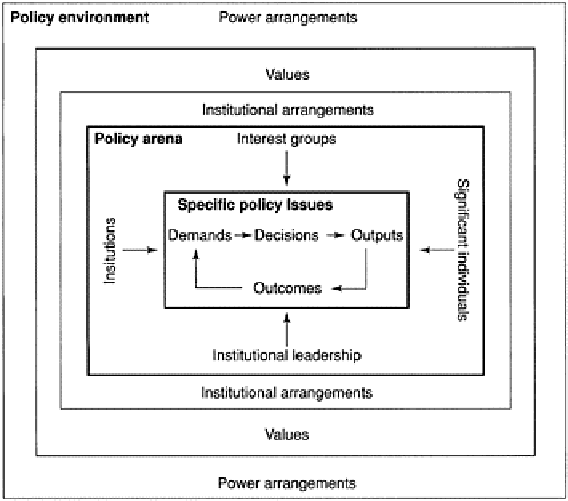Geography Reference
In-Depth Information
Figure 9.2:
Elements in the tourism
policy-making process
having collected all the necessary data and systematically evaluated them' (L.S.Mitchell
1979:296). However, while these may be useful rational models against which to
compare reality, they do not provide detailed insights into the real world of planning and
its associated set of values, power and interests. Instead, approaches, methods and
techniques need to be evaluated within the context of the goals, objectives and outcomes
of tourism planning and development (Hall and Jenkins 1995; Hall et al. 1997).
Descriptive approaches give rise to explanations about what happened during the
decision-making, planning and policy-making processes. Case studies are an important
component of descriptive tourism research as they help analysts understand the effects
that such factors as choice, power, perception, values and process have on tourism
planning and policy-making. As L.S.Mitchell (1979:42) recorded, 'much research in
resource analysis has been based upon one-shot case studies'. The main criticism of the
case study method is 'claimed to be its reliance upon historical-descriptive chronology
and lack of consistency in scope, context and conceptual cohesiveness' (Davis 1981:8).
However, although a single case study 'will rarely be sufficient for a full inquiry', the
duplication of studies may well suggest fundamental relationships and generalisations
(L.S.Mitchell 1979:43). Indeed, 'it cannot be claimed that the case evidence is entirely
definitive or utterly representative' (Davis 1981:7), but case studies do present the
researcher with the capacity to highlight certain problem areas within the scope of the
objectives to be gained in this thesis. This attitude is reflected in the recreation research
of La Page (cited in Mercer 1973:42): 'For sound research planning, I would gladly swap

